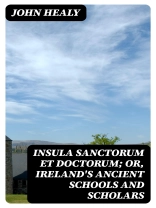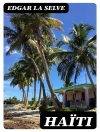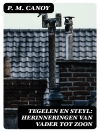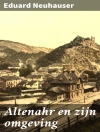In ‘Insula Sanctorum et Doctorum; Or, Ireland’s Ancient Schools and Scholars, ‘ John Healy embarks on a profound exploration of the rich intellectual heritage of ancient Ireland. Combining meticulous historical research with a picturesque narrative style, Healy illuminates the pivotal role played by Irish monastic schools during the early medieval period. The work highlights not only the educational institutions’ contributions to philosophy, theology, and literature but also showcases the unique cultural and linguistic context of Ireland as a vibrant center of learning. Healy’s text serves to reclaim and celebrate the legacy of these scholars and the enduring impact of their teachings on the European intellectual tradition. John Healy, a prominent Irish historian and educator, draws from his extensive background in archæology and Irish cultural studies to provide a nuanced perspective on Ireland’s forgotten educational luminaries. His scholarly endeavors are underpinned by a passion for illuminating the overlooked narratives of Ireland’s history, making ‘Insula Sanctorum et Doctorum’ a culmination of his life’s work in researching the profound impact of these ancient institutions. This book is an essential read for scholars, students, and anyone interested in the rich tapestry of Ireland’s historical and cultural legacy. Healy’s insightful analysis and vivid prose not only enrich our understanding of a vital period in educational history but also encourage a reevaluation of Ireland’s contributions to global scholarship.
Tentang Penulis
John Healy (1841–1918) was a distinguished figure in the Irish Catholic Church and a scholarly writer, most noted for his historical and ecclesiastical works. As the Archbishop of Tuam, Healy left an indelible mark on the intellectual and spiritual life of his time. His erudition is perhaps best encapsulated in his seminal work, ‘Insula Sanctorum et Doctorum; Or, Ireland’s Ancient Schools and Scholars, ‘ published in 1890, which serves as a compendium of knowledge on the early Christian educational establishments and intellectual figures of Ireland. This tome is a testimony to Healy’s profound understanding of Ireland’s ecclesiastical heritage and its contribution to the Christian world. It covers a wide range of topics including the lives of Irish saints, the role of monasteries and the implications of the island’s scholarly pursuits on wider Christendom. Healy’s literary style combines meticulous research with a narrative that is as informative as it is engaging, positioning him among the eminent ecclesiastical historians of his era. His contributions to the landscape of Irish theological literature remain invaluable, offering insights and comprehensive perspectives that continue to inform scholars, historians, and enthusiasts of Irish history and early Christian studies.












